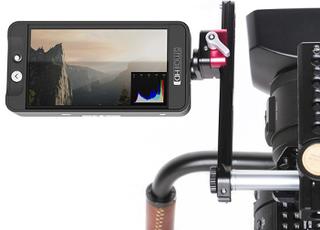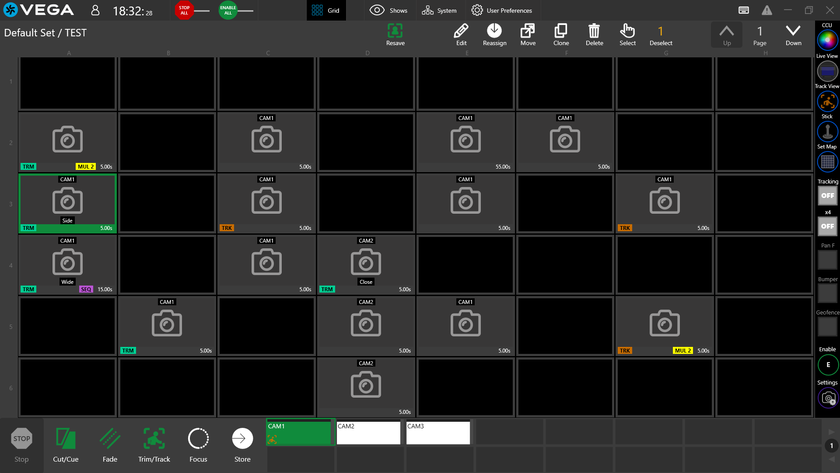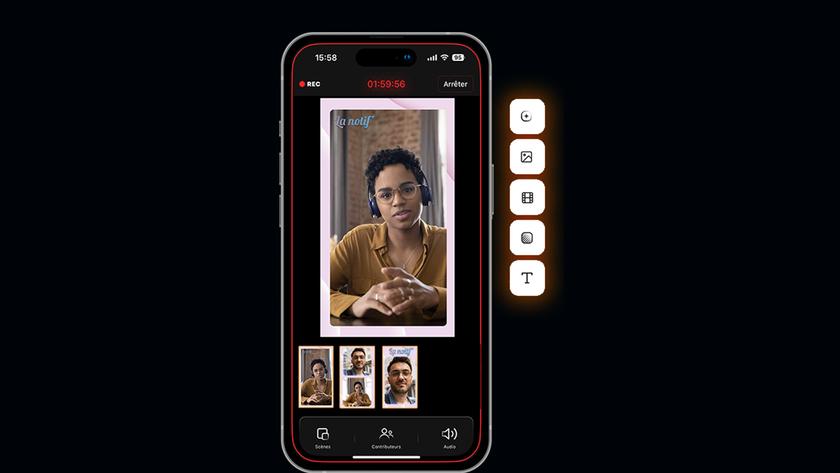Review: SmallHD 502 Monitor and Sidefinder EVF Production Kit
The makers of “Godzilla” got it right: size matters. But unless you are designing a monster, weight, ease of use, and design also matter. The gear we choose to use in our various modes of shooting has a wide and deep effect on the quality of the work and the amount of energy it draws from us to do it, with monitoring right at the center of that. This is not news; what is news is the availability of smaller, higher quality, lighter, and more functional monitors and viewfinders for us to use on our more compact and/or more modular cameras. Long at the forefront of these developments is SmallHD, and their 502 Monitor and Sidefinder system is extremely well designed and a worthy competitor for your attention.

FEATURES
The 502 monitor (MSRP $1199) is an SDI and HDMI in and out, battery powered, 5-inch LCD monitor, with 1920x1080 resolution. It weighs in at about 9 ounces (255 grams) without batteries and about 14 ounces with two Canon LP-EP6 batteries installed, is about 3/4-inch thick (without batteries), and is made of milled aluminum with a rubberized surface that is easy to grip—but has an occasional tendency to pull away—and has a very solid feel. There are mounting points (1/4-inch-20 threaded) on the bottom, one side, and back. The face of the monitor has a tiny joystick and a button, to navigate the menu system. The display specifications are impressive, both on paper and by eye. On paper, SmallHD lists: 441 pixels per inch, 1500:1 contrast ratio, 8-bit color depth, 179 degree viewing angle, and the ability to display 85 percent of NTSC and 100 percent of Rec 709 color gamut. By eye, the monitor is sharp and accurate, easy to look at closely for long periods of time in a wide variety of conditions (bright sunlight viewing is aided by a hood).
The Sidefinder EVF does not seem to be available separately, which is understandable since it was designed specifically for the 501 (HDMI in/out only) or 502 monitor. It mounts, with a milled aluminum frame, onto the face of the 502. The EVF is hinged to swing away when not in use and is held shut for use by a magnetic clasp. The monitor resolution drops down to 1366x768 for better visual compatibility with the EVF, when the loupe is engaged, then automatically resets to 1920x1080 when the EVF is swung away. The diopter has -2 to +4 adjustment for a wide variety of eyes; the 502’s software has an adjustment for field of view when using the EVF.
The monitor software is where the viewing, test and adjustment, and customization controls are; the menus are navigated by a small nub of a joystick and a back button on the left side of the monitor’s face. There are the controls you would expect: input, output, headphone volume level, aspect, scaling, brightness, image rotation; there are also a wealth of image and sound analysis tools and shooting aids. You can use and display audio meters, histogram, waveform monitor, and vectorscope while shooting, in addition to choosing to view SDI metadata. Shooting aids include exposure and focus assist, zebras, peaking, framing and safe area markers and the ability to capture and display an image over video with a varying amount of transparency. Finally, a 3D LUT can be applied to the incoming video; many can be stored in the device. The collection of monitor settings and tools are stored in a system of pages (one LUT per page, very quick and easy to flip between pages to compare LUTs), a collection of massed presets.
The production kit, reviewed here, comes in an air-tight hardshell case and includes a remote control (has a joystick and two buttons to access and set menu controls for nearly all functions of the monitor), two batteries and a charger kit, rod and hot shoe mounting systems, screen protectors, SDI and HDMI cables, and even a cleaning cloth.
IN USE
I used the 502 and Sidefinder system in several shooting situations, indoors and outside, after a set up and evaluation session with the studio cinematographer Alan Dater and his Sony FS7 camera. It took us a little while to figure out the mounting system properly for the monitor and EVF, but basically set up was pretty easy. We both felt, though, that a pdf manual for field reference would have made things even easier. There is a quick start guide provided and a quick video in the 502’s software, both of which are helpful, and there are numerous instructional videos on line. We verified the monitor’s accuracy right out of the box: deep and solid blacks and very accurate colors, with no visible latency or smeared motion. The ‘pages’ concept for presets is wonderful in use, given some pre-production set up time; on the fly adjustments are also quick with thanks to the very straightforward and shallow menu structure. I very much liked the use of a joy stick and a button instead of a touch screen, which always seems easy until the heat of a shoot. The monitor is very easy to see, even from a fairly oblique angle, and is gentle on the eyes.
It does take a while to get the EVF set up for one’s particular preferences and use, but this is not at all the fault of the unit and has more to do with the individualized nature of using an EVF. One needs to adjust the physical location and angle of the monitor and eyepiece, adjust the diopter to the needs of one’s eye, and adjust the field of view inside the EVF to be able to easily see the entire frame. The 502/Sidefinder is easy on all these fronts, and very confortable in use. If I were to continue using the Sidefinder, I would add a padded eyepiece to make the intersection of my glasses/eyesight and the eye cup more direct and comfortable.
Using the EVF outside on a handheld and constantly moving shoot of a theater piece was equally fine and the unit was easy to look at and unobtrusive. I am generally more comfortable not using the EVF and just working with the monitor; there were a couple moments that convinced me that I would want a sun shade at the ready, but the monitor image held up nicely even in bright sun. My personal preference is for a larger monitor when I am working, and, when I got a chance to try a friend’s 7-inch 702, I realized that that was the best size for me.
SUMMARY
The 502 Sidefinder Kit is a great product and an excellent value. The main individual components, the 502 monitor and the EVF, are well and thoughtfully designed in both hardware and software. Efficiently using a field monitor and an EVF depends so much on personal preference and need, so the usefulness of the unit rests on its ability to be adapted and configured to the needs at hand (or eye). In that light, this combination unit is a big success and a pleasure to use. And it looks great too.
Michael Hanish operates Free Lunch, a video/audio/multimedia production house near Guilford, Vt. He may be contacted at michael@freelunchmedia.com.
Get the TV Tech Newsletter
The professional video industry's #1 source for news, trends and product and tech information. Sign up below.












